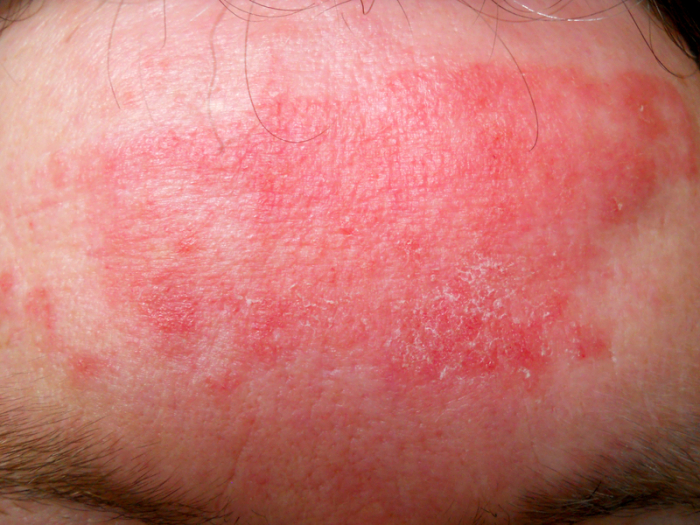
 Data Structure
Data Structure Networking
Networking RDBMS
RDBMS Operating System
Operating System Java
Java MS Excel
MS Excel iOS
iOS HTML
HTML CSS
CSS Android
Android Python
Python C Programming
C Programming C++
C++ C#
C# MongoDB
MongoDB MySQL
MySQL Javascript
Javascript PHP
PHPPhysics
Chemistry
Biology
Mathematics
English
Economics
Psychology
Social Studies
Fashion Studies
Legal Studies
- Selected Reading
- UPSC IAS Exams Notes
- Developer's Best Practices
- Questions and Answers
- Effective Resume Writing
- HR Interview Questions
- Computer Glossary
- Who is Who
What's Causing Your Skin Rash?
A rash may affect only a small region or spread across a wide swath of skin. They come in a wide range of textures and appearances, from dry to wet to bumpy to smooth to cracked and blistered, and can be unpleasant, itchy, and even change color. Millions of individuals worldwide suffer from rashes, some of which may be treated at home, and others may be a warning sign of a more severe condition.

To what extent do skin rashes occur frequently?
Everyone experiences at least one skin rash at some point in their lives. Having temporarily itchy skin or skin that is red and bumpy is fairly frequent.
When may a skin rash occur?
Rash symptoms can affect anybody, from newborns to the elderly. Diaper rashes and cradle caps are common in infants. Atopic dermatitis and other rash-causing viruses, such as the fifth disease, are common in children. Contact dermatitis can also affect older children and adults if they have skin that has grown sensitized to allergens or irritants.
Forms of skin irritation
A few examples of the various categories of skin rashes are −
Dermatitis caused by skin contact − The skin is inflamed as the immune system attacks a foreign material. Fragrances, preservatives, metal (often found in costume jewelry), and poison ivy can trigger allergic reactions in many people. Soaps, detergents, chemicals, and home cleansers are common irritants.

Eczema − Eczema, also known as atopic dermatitis, typically appears throughout childhood and improves as the kid matures. A high heritability is shown with this condition (genetic). Eczema is more common in those who also suffer from asthma or allergies.
Hives − Hives, medically known as urticaria, manifest as red, itchy bumps on the skin. Allergic reactions to certain foods, medications, or even pollen or insect bites can cause hives. Hives can also be triggered by a reaction to particular germs or by a sudden change in temperature.
Psoriasis − Rashes of thick, scaly skin are a permanent result of this skin condition. Elbows, knees, lower back, scalp, and genitalia are typical areas affected by the rash. True, psoriasis may run in families.
Viral − Chickenpox, measles, and molluscum contagiosum are just a few viral illnesses that cause itchy, red rashes on the skin.
Widespread
Different things, such as an allergic response, a sickness, a reaction, or a drug, can cause a rash. Infections with bacteria, fungi, viruses, or parasites can play a role in bringing on these symptoms.
Atopic Dermatitis
Contact dermatitis, which happens when the skin has an allergic reaction to an object it has come into contact with, is a leading cause of rashes. Symptoms include a rash that causes the skin to become red, irritated, itchy, runny, and sticky discharge. Plants like poison ivy and sumac, as well as compounds like latex and rubber, are examples of toxins that can lead to such conditions.
Medications
A rash is a common side effect of various drugs and can also represent an allergic reaction. In addition, some drugs, such as antibiotics, can produce photosensitivity or increased sensitivity to sunshine. A sunburn-like appearance characterizes the photosensitive response.
Infections
Bacterial, viral, or fungal infections can cause a rash. The appearance of these rashes varies from illness to infection. For instance, the irritating rash caused by the fungal illness known as candidiasis typically manifests itself in the skin's creases.
If you feel you have an infection, you should get checked out by a doctor right away. Immune system disorders
A person develops an autoimmune disorder when immune systems incorrectly target healthy tissue. Itchy skin is a symptom of several autoimmune disorders. Lupus, for instance, is a disease that can impact many organs and tissues. A butterfly-shaped rash will appear on the affected person's face.
Possible Rashes and Their Causes
Bite and sting injuries
Bites and stings from several insects are known to trigger such reactions. Although responses will vary from person to person and animal to animal,
Bites from fleas
Fleas are small jumping insects that can make their home in upholstered furniture and carpets. They can quickly overrun a house due to their tremendous reproductive rate.
Fifth disease
Parvovirus B19 is responsible for the fifth illness, erythema infectiosum and slapped cheek syndrome. The rash is a symptom that develops in three distinct phases −
After four days, a net of red spots may emerge on the arms and trunk. In the third stage, the rash appears exclusively when exposed to sunshine or heat.
Impetigo
Most cases of impetigo occur in youngsters. A red, itchy spot on the skin is often the first indicator. Impetigo can be one of two types −
Red sores develop around the mouth and nose in non-bullous impetigo. In contrast, children under 2 are more likely to develop bullous impetigo—blisters of a moderate to severe size form on the body.
Shingles
Shingle is a disease caused by a nerve infection. The varicella-zoster virus, which also causes chickenpox, is responsible for this disease. In addition to discomfort, symptoms include a rash that looks like chickenpox and spreads in a belt around the affected nerve.
How to determine the cause?
There are several potential causes of a skin rash, making diagnosis difficult. Doctors will look at the rash, evaluate your symptoms, and gather background information. You might have to take tests like −
Biopsy − A biopsy is a tiny sample of skin or other tissue taken by your doctor to test for the presence of a virus or bacterium.
Analyzing the blood − Some skin disorders may have an antibody component that a simple blood test might detect. It is essential to run blood tests to rule out the possibility that other organ systems are also affected by a systemic disease when a rash is present.
How does one handle or treat a Skin rash?
The best treatment for skin rashes depends on what causes them. Sometimes the rash won't clear up for weeks. Therapies for skin rashes consist of −
Medicines for allergies − Allergy treatment, such as oral antihistamines, can alleviate scratching.
Creams − Cortizone and similar hydrocortisone lotions relieve inflammation and irritation.
Immunosuppressants− Doctors may prescribe immunosuppressant drugs to treat a skin rash caused by eczema or another immune response. Subduing it helps reduce inflammation (irritation).
Oatmeal baths − Dry, itchy skin can be soothed by soaking in a warm bath with colloidal oatmeal. You may find bath products containing colloidal oatmeal, at any pharmacy.
Steroids − Treatment with steroids may include a cream applied to the skin or an oral steroid such as prednisone if the symptoms do not improve. Using steroids reduces swelling and itching.
Topical immunomodulators − Topical immunomodulators can alter allergen-specific immune system responses (modulated).
Conclusion
Viruses and germs are difficult to prevent, but you may avoid allergies and irritants. Rash symptoms, regardless of origin, are often unpleasant but manageable. Psoriasis is a skin ailment that requires constant attention throughout a person's life. Your doctor will be able to determine the source of the skin rash. Consult your doctor about reducing your contact with irritants that bring on a rash. He can develop a treatment plan tailored to your unique symptoms and rash type.

